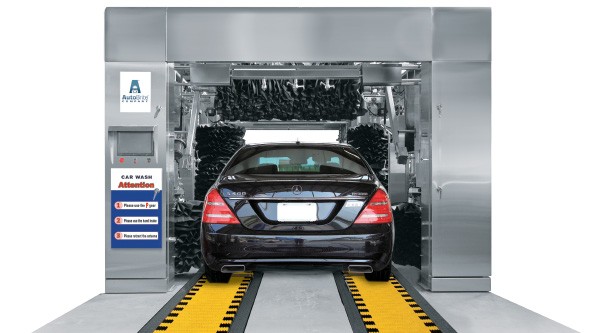The Price Myth - Comparing the True Costs of Car Wash Conveyor Options
When we decided to take on the challenge of supplying the U.S. market with a belt conveyor alternative two years ago, we knew from the get-go that head-to-head price comparisons were going to be a challenging issue to overcome. At the time, we only offered our dual-belt conveyor in a stainless steel model, which only exacerbated the issue in what has long been a price sensitive market, despite the exceptional durability boost and longevity that comes with stainless steel equipment. Our discussions that year with owners and operators highlighted that decision-makers struggled to justify the benefits of belt conveyors against their higher costs.
However, what we underestimated that first year is the incredibly significant difference in the site work costs that traditional chain and roller conveyors require compared to a belt conveyor model. As it turns out, when the cost of constructing the conveyor trench is included in the comparison, the total cost of each model is strikingly similar, and should cause decision-makers to more closely consider the competitive advantages that belt conveyor systems offer once this price myth has been eliminated. That being said, let's dive deeper into what I like to call the "flawed" vs "true" cost comparison using conservative industry estimates.
The first issue to consider when understanding the "flawed" comparison is comparing the raw equipment costs in a vacuum:
1. Comparing Equipment Costs Alone
"Flawed" Cost Compairson - 120' Conveyor Length |
|||
| Chain & Roller – Steel | Dual Belt – Steel | Dual Belt – Stainless | |
| Cost of Equipment | $57,734 | $99,390 | $151,290 |
When the traditional chain conveyor is compared to the belt model using equipment costs alone, it's easy to understand why investors might be quick to shy away from belts. At 3 times the initial cost, decision-makers are quick to write off the posited advantages of belt conveyors. But what happens when we introduce costs of constructing the conveyor pit?
2. Cost Factors of Conveyor Trench Construction
As I previously mentioned, the differing costs of constructing the conveyor pit for each conveyor type turns out to be as significant as the difference in equipment costs. As your preferred concrete contractor will be happy to explain, constructing a trench for a traditional chain conveyor is quite a difficult and tedious task. Getting all the details right the first time is critical, as there is nothing worse than pouring concrete into an improperly formed conveyor trench. There are several significant variables in the conveyor pit design that require special attention including chase-ways, in-beds, depths at drains and dams, and depth of the conveyor shelf. Additionally, most of the material used to construct the trench cannot be reused by the contractor due to its unique design.
Comparatively, the pit for a dual-belt conveyor is an extremely simple and straightforward rectangular design, with some attention towards drainage. To ensure accuracy in our comparison, we provided 120-foot cut sheets for a chain conveyor trench and our dual-belt model to a local contractor and requested quotes for both jobs. Here's a look at more equitable comparison of the total costs of each conveyor type.
"True" Cost Compairson - 120' Conveyor Length |
|||
| Chain & Roller – Steel | Dual Belt – Steel | Dual Belt – Stainless | |
| Cost of Equipment | $57,734 | $99,390 | $151,290 |
| Cost of Pit Construction | $102,979 | $30,560 | $30,560 |
| Total Cost | $160,713 | $129,950 | $181,850 |




Comments